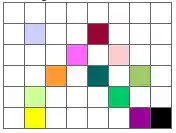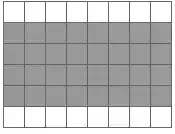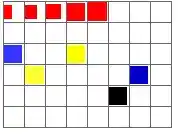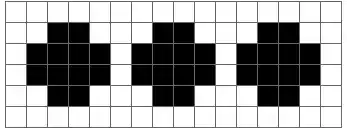PPI vs. DPI – The Difference Explained Simply
Pixels per inch (PPI) and dots per inch (DPI) – two terms that are often confused. But what exactly do they mean? When should you use which one – and what is the actual difference? Here's what you need to know.
Why the confusion? Both terms describe a density per inch. That sounds similar, but they refer to very different things: PPI describes digital image pixels on a screen or in a file, while DPI refers to physical print dots that a printer places on paper.
PPI: Pixels per Inch – The Digital World
PPI (Pixels per Inch) indicates how many individual image pixels are packed into one inch (2.54 cm) in a digital image or on a display. Think of pixels as mosaic tiles: Each has a fixed size and displays a precise color. Depending on the device and color depth, this color can be chosen from millions or even trillions of options – e.g., with 8 to 48-bit color depth.
- Digital unit: Indicates the resolution of image files and displays.
- Fixed pixel size: Each pixel in the grid is the same size.
- Full color information: Each pixel displays its own color value (based on color depth).
- High color variety: Billions of possible colors per pixel.
Where is PPI used? Anywhere digital images are captured or displayed:
- Digital cameras (sensor resolution)
- Scanners (scanning resolution)
- Monitors and screens (pixel density)
- Smartphones and tablets (display quality)
- Projectors
- Image editing software (resolution settings)

Digital pixels: Each dot has a distinct color or grayscale value.

A gray bar – digitally rendered using many gray pixels.
DPI: Dots per Inch – The Printed World
DPI (Dots per Inch) describes how many small ink or toner dots a printer can place per inch (2.54 cm) on paper or other media. Unlike digital pixels, these dots can:
- Vary in size: Printers adjust dot size to simulate brightness and color transitions.
- Contain only a few base colors: Usually four to six inks, such as CMYK or CMYK plus light cyan/light magenta.
How is a color image printed? Since a printer doesn't have an infinite color palette, it uses halftoning to simulate colors. To reproduce the color of a pixel from the digital source, the printer places many tiny dots close together. From a normal viewing distance, the desired color impression is created.
This is why a printer needs a significantly higher DPI to accurately reproduce a PPI-based image with sharpness and color fidelity.
- Physical unit: Indicates a printer's resolution.
- Variable dot size: Controls brightness and color effect.
- Limited number of colors: Typically 4–6 print colors.
- Color effect via halftoning: Many tiny dots create color gradients.
- Example: A 1200-dpi printer using a 6×6 dot matrix creates one color dot. This equals 200 LPI (lines per inch) – roughly comparable to 200 PPI in the digital world.
Where is DPI used? In devices that apply color physically to paper:
- Inkjet printers
- Laser printers
- Plotters and large-format printers

A typical 4-color print using cyan, magenta, yellow, and black (CMYK).

Up close: Many tiny colored dots blend into a single color.
The same gray bar as above – but printed. Varying sizes of black dots create a gray impression from a distance.

The printed bar: Individual dots blend into grayscale tones.
The base colors C (cyan), M (magenta), Y (yellow), and K ("key" – black for depth and contrast):

The subtractive CMYK color model used in color printing.
Summary: PPI vs. DPI at a Glance
| Feature | PPI (Pixels per Inch) | DPI (Dots per Inch) |
|---|---|---|
| What is measured? | Pixel density in digital images | Dot density on paper |
| Application area | Displays, cameras, scanners, image files | Printers |
| Color value per point | An exact color value per pixel | A base color per dot |
| Point size | Fixed | Variable |
| Purpose | Digital sharpness and detail | Print detail and color rendering |
| Color rendering | Directly per pixel | Indirectly through dot mixing |
Why does this matter to you?
- When printing: For high-quality photo prints, 300 PPI is usually recommended. The printer uses its much higher DPI value to reproduce those pixel colors as accurately as possible. An image file with just 72 PPI – common on the web – will look blurry or pixelated when printed.
- When editing images: If you plan to print an image, set the desired resolution in PPI beforehand (e.g., 300 PPI). For screen use only, 72 or 96 PPI is usually sufficient to save storage space.
- When buying devices: A monitor with high PPI displays content more sharply. A printer with high DPI produces finer details and smoother color gradients.
Conclusion: Easy to remember: PPI is for digital display – DPI is for print. Both units sound similar but refer to fundamentally different things.